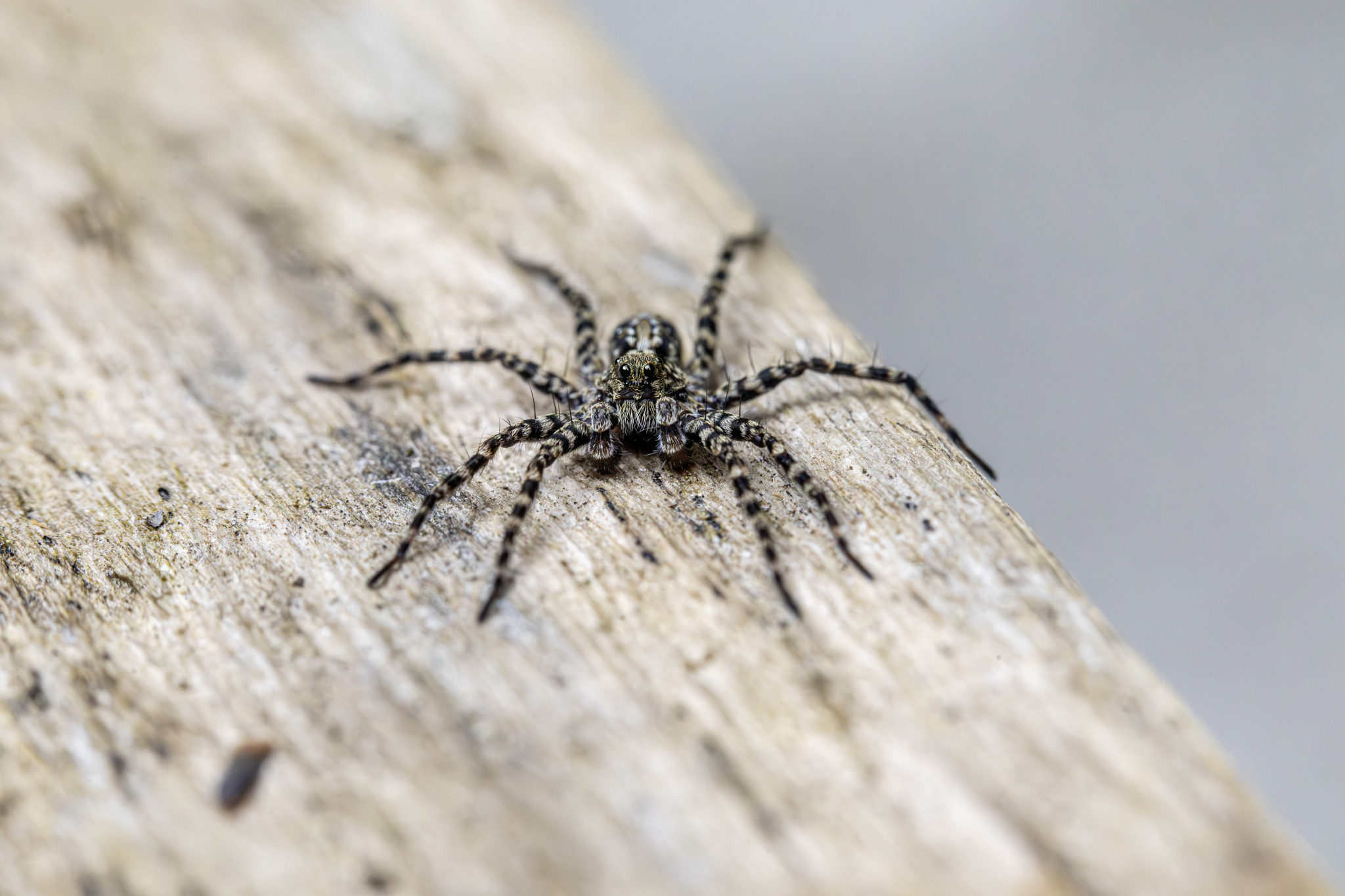The Spotted Wolf Spider (Pardosa amentata) is a small but highly active spider commonly found across Europe and parts of Asia. It belongs to the family Lycosidae, known for their hunting prowess and distinctive behavior. Here’s a closer look at this species:
Identification
- Size: Adults range from 4.5 to 7 mm in body length. Females are typically larger than males.
- Color and Pattern: The body is usually brown or gray with darker patterns. The cephalothorax (front part of the body) often features a lighter stripe down the middle, while the abdomen has a pattern of spots or stripes. The legs are long, strong, and often banded with alternating light and dark segments.
Habitat and Distribution
- Geographical Range: The Spotted Wolf Spider is widespread across Europe and extends into parts of Asia.
- Preferred Habitat: These spiders are versatile and can be found in a variety of environments, including grasslands, meadows, woodland edges, and gardens. They prefer areas with loose, sandy soil where they can easily chase down prey.
Behavior and Ecology
- Hunting Style: Unlike web-building spiders, Pardosa amentata is an active hunter. It relies on its speed and excellent eyesight to chase down and capture prey, which consists mostly of small insects and other arthropods.
- Reproduction: Females are known for carrying their egg sacs attached to their spinnerets, ensuring the eggs are protected and mobile. Once the spiderlings hatch, they often ride on their mother’s back until they are ready to disperse and fend for themselves.
- Lifespan: These spiders usually live for about a year, undergoing several molts as they grow from spiderlings to adults.
Ecological Role
- Predator: As effective hunters, Spotted Wolf Spiders play a crucial role in controlling insect populations, making them beneficial in natural pest control.
- Prey: While they are predators, these spiders are also prey for birds, reptiles, and other larger predators.
Human Interaction
- Behavior Around Humans: Pardosa amentata is generally not aggressive and poses no threat to humans. They may occasionally enter homes or gardens, but they typically avoid human contact.
- Conservation Status: This species is common and not considered at risk. Its adaptability to various habitats contributes to its widespread presence.
The Spotted Wolf Spider is a fascinating example of nature’s efficiency in small, agile predators. Its ability to thrive in diverse environments and its role in maintaining ecological balance make it an important species in its native habitats.
Visited 94 times, 23 visit(s) today
Views: 194
Subscribe to the newsletter:
